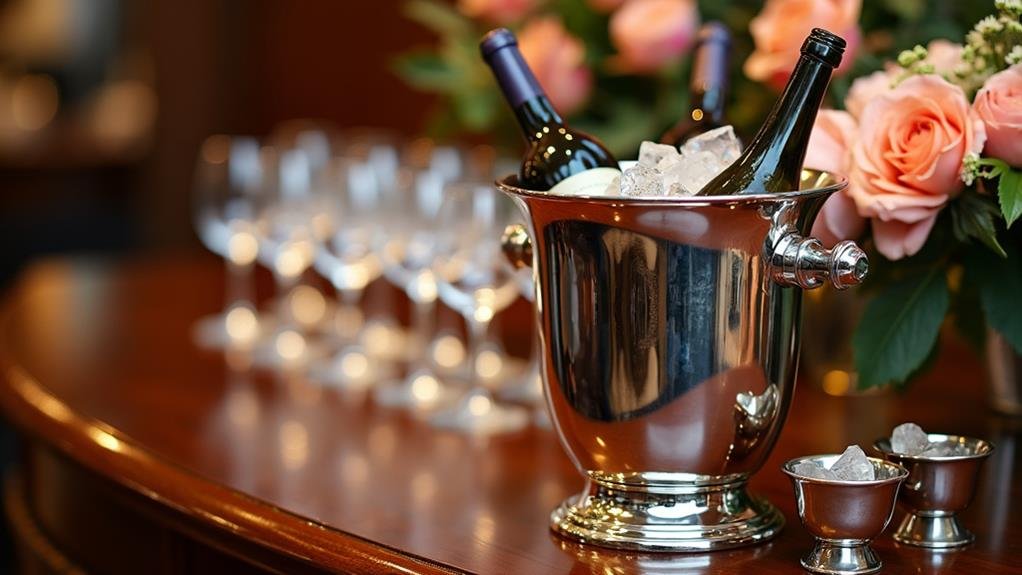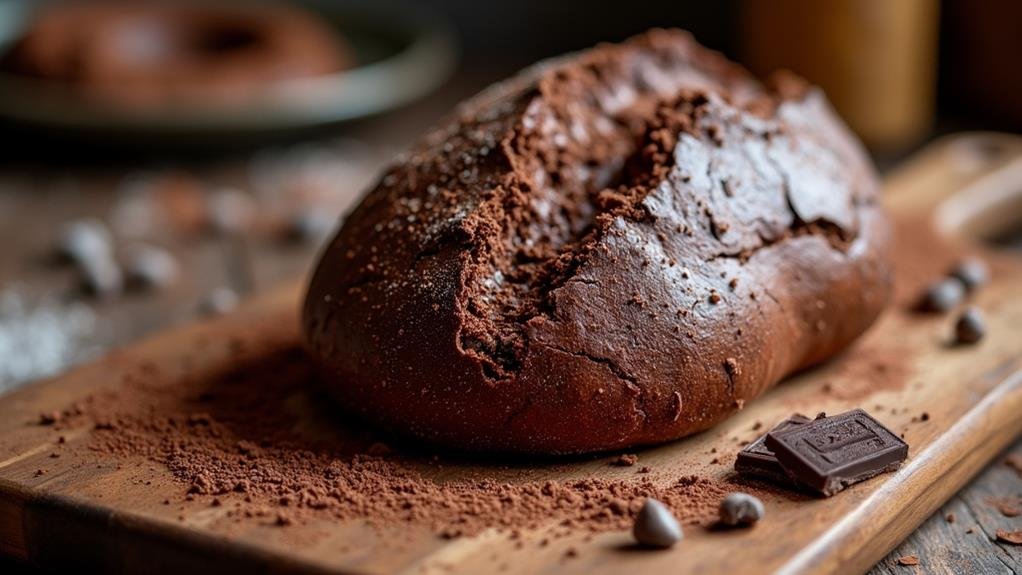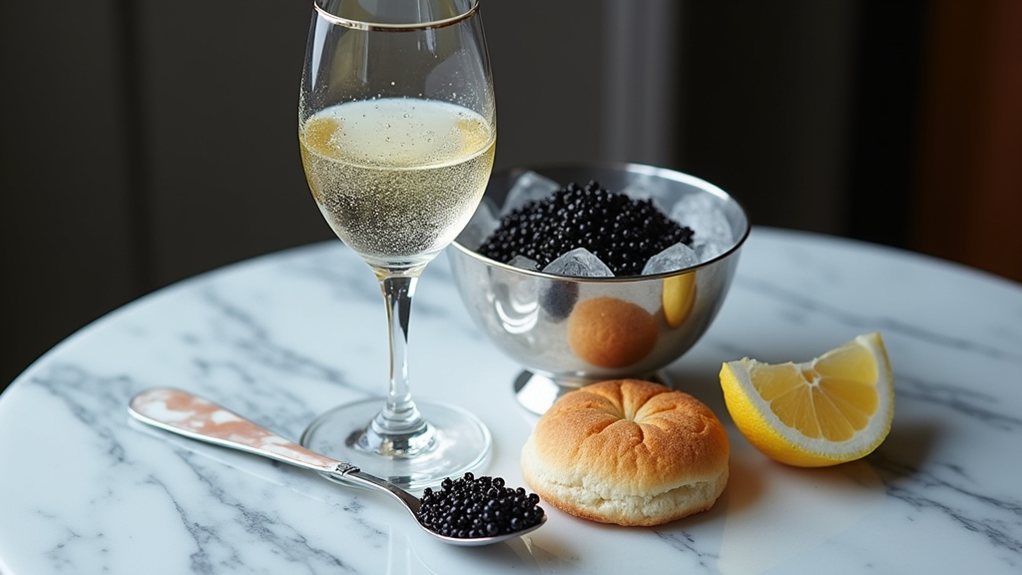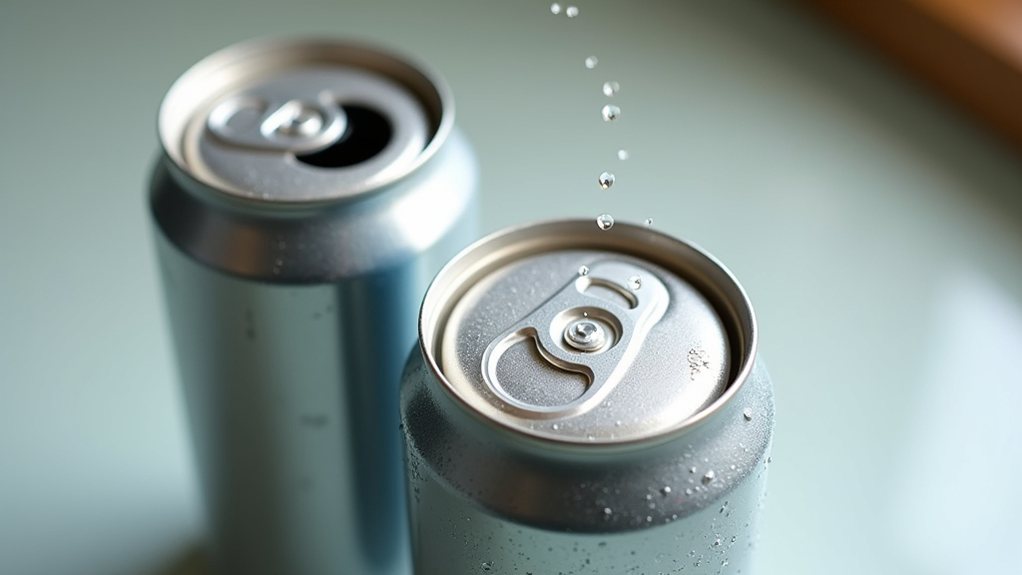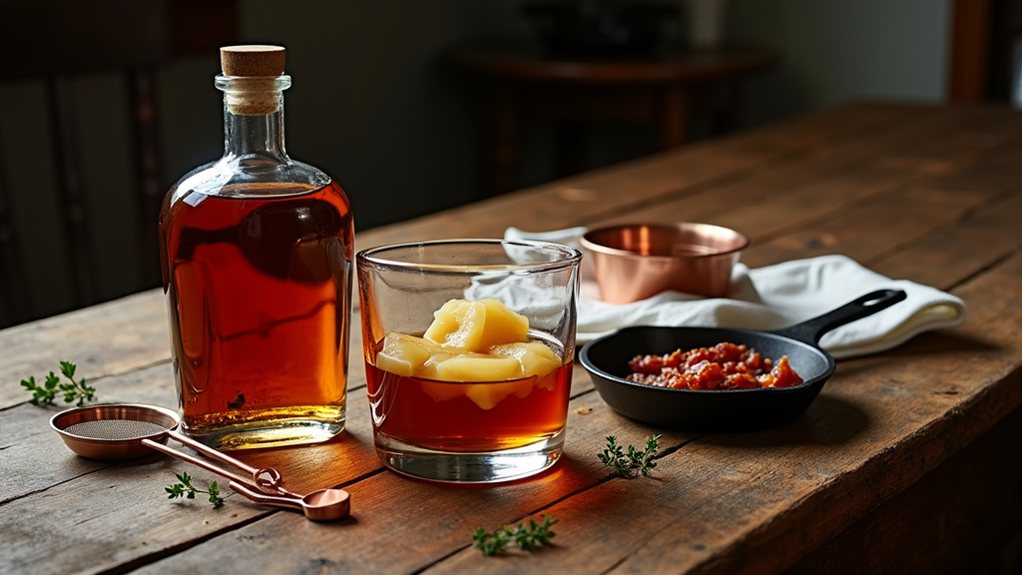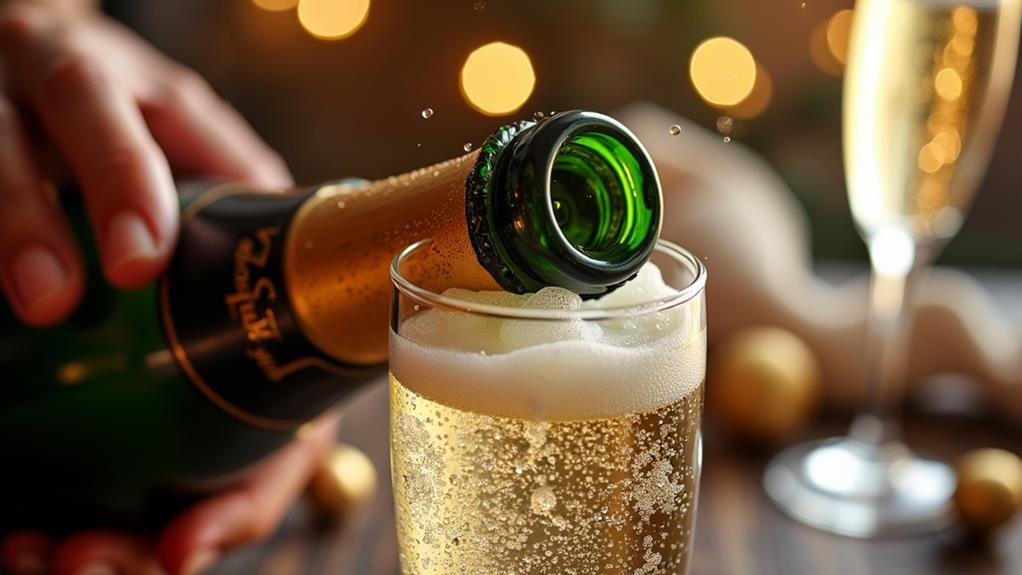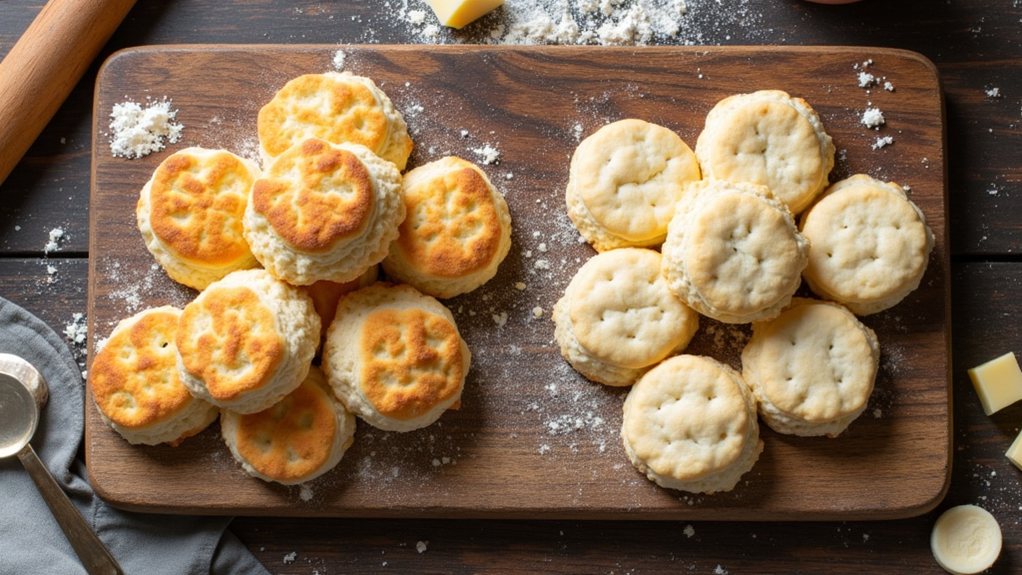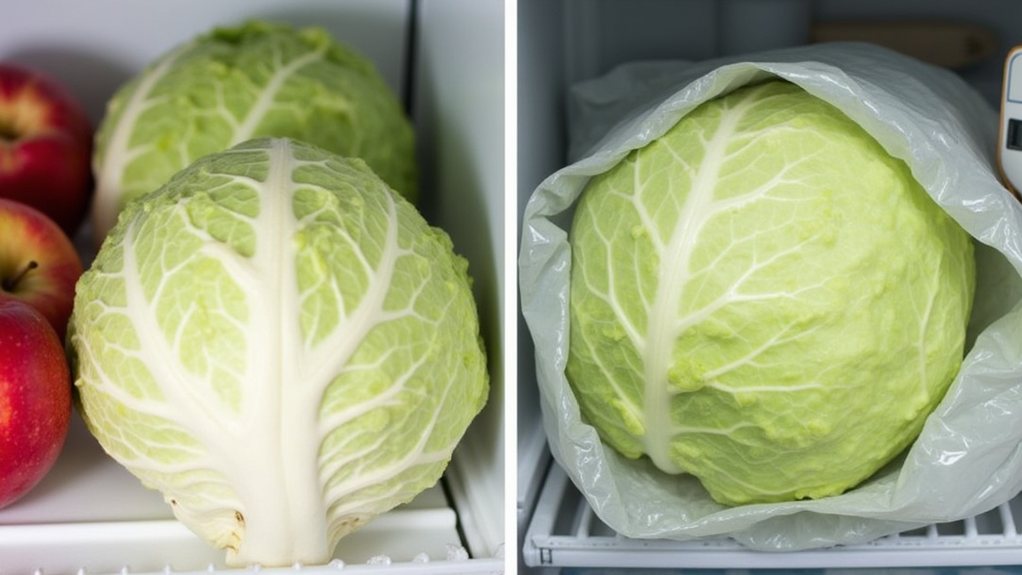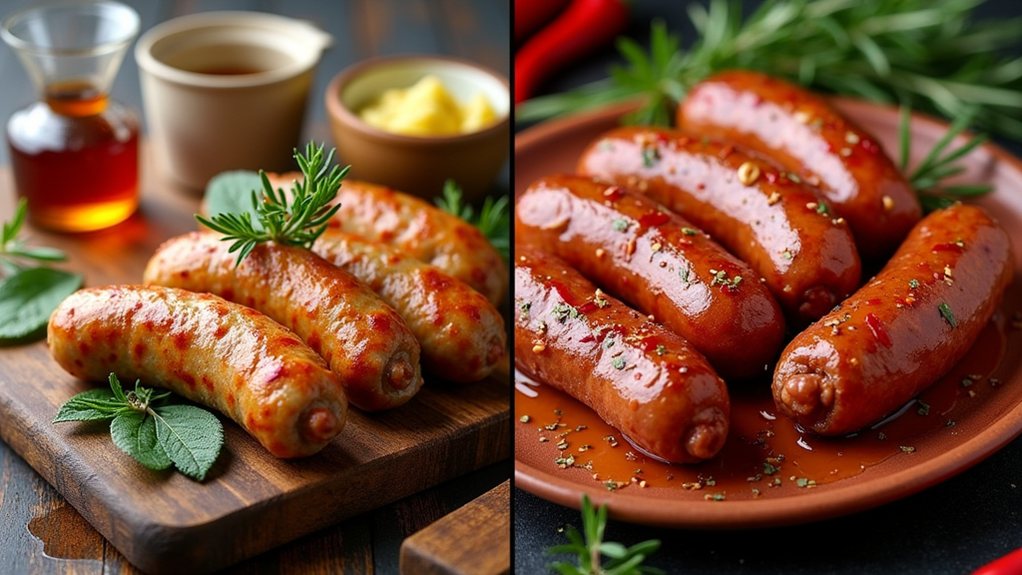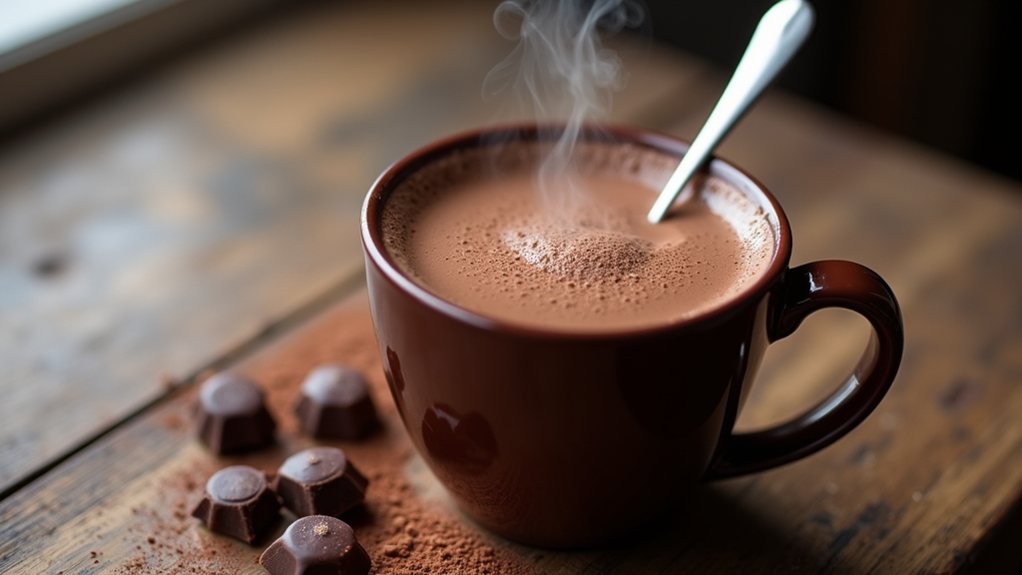To chill wine like a sommelier, start by placing the bottle upright in an ice bucket. Fill the surrounding area with equal parts ice and cold water, then add a splash of table salt to speed up the chilling process. Proper temperatures are essential; sparkling wines should be chilled to 40-50°F, whites and rosés to 45-55°F, and lighter reds to 55-60°F. Remember to rotate the bottle every few minutes for consistent cooling, and use a digital thermometer for precise monitoring. This detailed approach improves the wine's flavor and aroma, turning your experience into something extraordinary. More detailed tips can enhance your wine service even more.
Ideal Wine Temperatures
Selecting the ideal wine for any gathering involves understanding the best serving temperatures for various types. For example, sparkling wines, such as Veuve Clicquot, should be served chilled between 40-50°F to preserve their effervescence and crispness. White wines, like Sauvignon Blanc, and rosés, such as Whispering Angel, shine at slightly warmer temperatures, ideally between 45-55°F. Orange wines and lighter reds, such as Pinot Noir, benefit from a serving range of 55-60°F, allowing their nuanced flavors to flourish without being muted by excessive cold. Meanwhile, medium to fuller-bodied reds, like Cabernet Sauvignon, are best enjoyed at 60-65°F, which enhances their complexity and aroma.
To chill wine effectively in a bucket, it's important to follow expert advice. Utilizing a digital probe thermometer, like the ThermoPro, aids in accurately monitoring the temperature drop, ensuring each bottle reaches its optimal serving temperature. Implementing these wine tips not only elevates your personal enjoyment but also showcases your expertise to guests. By sticking to these temperature guidelines, you can craft an experience that allows each wine's character to shine, making every sip memorable. Remember, the appropriate temperature is key to unlocking the full potential of your chosen wine.
Ice Bucket Technique
An effective ice bucket technique is essential for quickly chilling a bottle of Sauvignon Blanc or any preferred wine to its ideal serving temperature. Begin by placing your wine bottle upright in the bucket. Fill the space around the bottle with a blend of ice and cold water. This mixture is crucial, as it maximizes the contact area with the bottle, promoting efficient cooling. Ensure that the ice and water cover the bottle up to its neck for an even chill.
To enhance the chilling process, add table salt to the ice-water mixture. Salt decreases the freezing point of water, allowing for a faster cooling effect. A valuable tip is to occasionally rotate the bottle every few minutes. This movement helps ensure that all areas of the bottle receive equal cooling, preventing any warmer sections.
For optimal results, keep a digital thermometer handy to monitor the temperature decrease. This careful approach guarantees that your wine reaches the desired temperature, enhancing your overall experience. By mastering the ice bucket technique, you can effortlessly serve your wine at the perfect temperature, showcasing the full potential of its flavors and aromas.
Temperature's Effect on Flavor
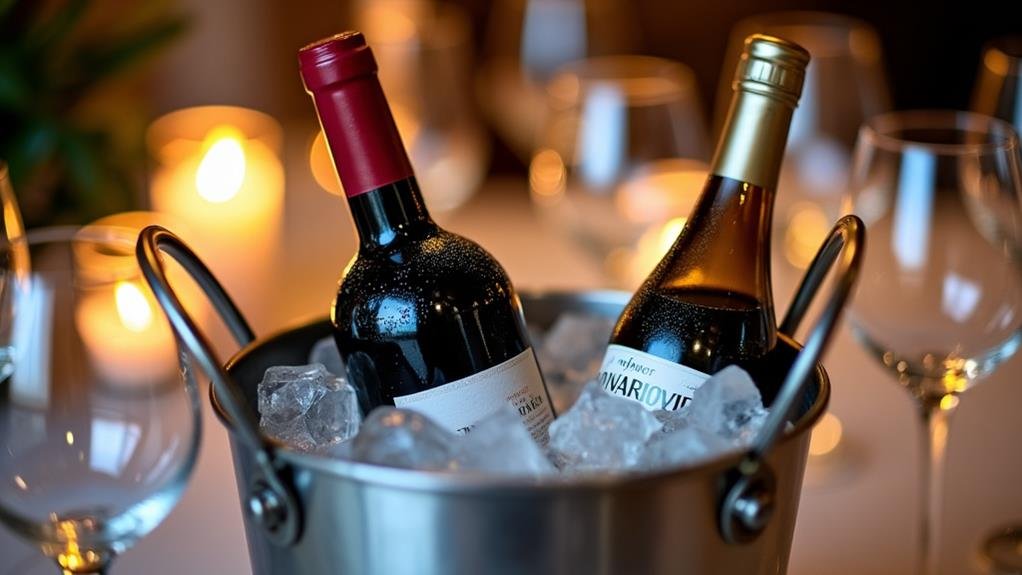
Understanding how temperature influences wine flavor is essential for any wine lover, as serving wine at the right temperature enhances its aroma and taste. Each type of wine has an optimal temperature range that accentuates its qualities. For example, sparkling wines, like Veuve Clicquot, are best served between 40-50°F, preserving their effervescence and freshness. In contrast, white wines and rosés, such as Sauvignon Blanc and Whispering Angel, thrive at 45-55°F, allowing their fruity notes to shine without being overshadowed by excessive chill.
As we transition to red wines, the temperature ranges adjust accordingly. Lighter-bodied reds, like Pinot Noir from Oregon, flourish at 55-60°F, while fuller-bodied reds, such as Cabernet Sauvignon from Napa Valley, benefit from a slightly warmer range of 60-65°F. Serving reds too cold can mute their intricate flavors and aromas, diminishing the overall tasting experience.
To achieve these delicate profiles, refrigeration for specific wine types is advisable, while an ice bucket can effectively maintain ideal temperatures once reached. Ultimately, grasping these temperature dynamics allows enthusiasts to enjoy wines in their finest form, ensuring that every sip is a celebration of its unique flavor journey.
Quick Cooling Tips
Quickly cooling wine can greatly enhance the tasting experience. Start by using an ice bucket for the wine bottle. Fill the bucket with a mix of ice and cold water, ensuring the bottle is submerged up to its neck for optimum chilling. Adding salt, like Morton salt, to this ice-water blend can significantly lower the temperature; just two cups can bring it down to about 45°F in roughly five minutes.
For even swifter results, move the bottle around in the bucket. This technique ensures even cooling, helping the wine reach its ideal serving temperature faster. Following the advice of culinary expert Ina Garten, consistent movement will lead to better results.
Using a probe thermometer, such as those from ThermoWorks, allows for precise monitoring of the wine's temperature. This way, you can determine when it has arrived at the perfect range for the type of wine you're enjoying. By applying these quick cooling strategies, you can elevate your wine experience, ensuring each sip is savored at its best without sacrificing quality.
Benefits of Proper Chilling
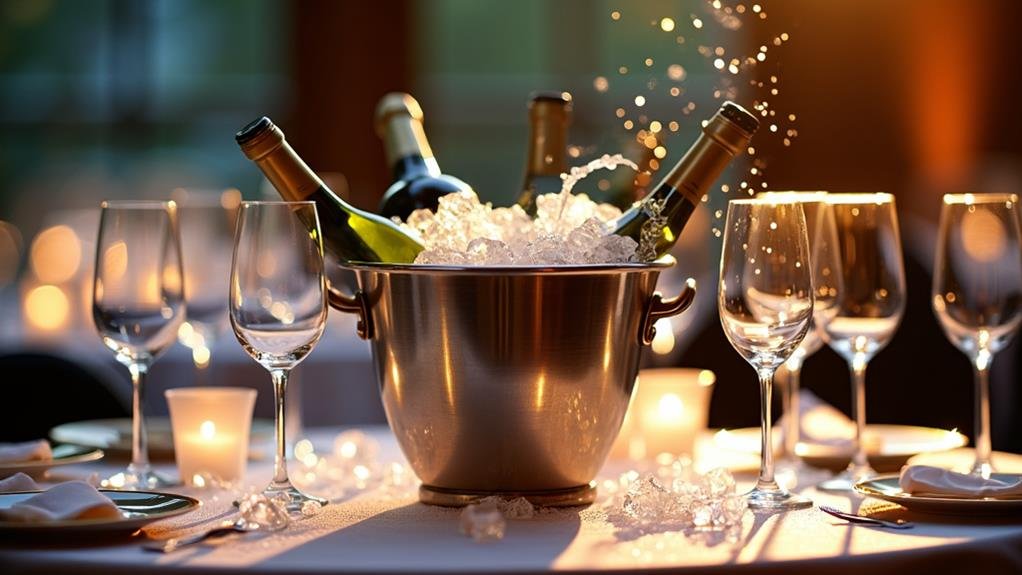
Chilling wine to the right temperature enhances its taste and fragrance, significantly elevating the tasting experience. Proper chilling benefits go beyond enjoyment; they deepen the appreciation of each bottle. Various wine categories, such as Cabernet Sauvignon and Chardonnay, have specific temperature ranges that, when followed, lead to a more refined experience.
- Enjoy the diverse flavors, from refreshing acidity in Sauvignon Blanc to rich fruitiness in Merlot.
- Relish the aromatic profile that can be diminished by incorrect temperatures, allowing full sensory engagement.
- Enrich gatherings, creating unforgettable moments when wines are served at their peak.
For sparkling wines like Veuve Clicquot, temperatures between 40-50°F highlight their lively bubbles. White wines and rosés, such as Pinot Grigio, thrive at 45-55°F, while lighter reds, like Gamay, perform best at 55-60°F. Full-bodied reds, such as Cabernet Sauvignon, should be enjoyed at 60-65°F. Methods like using an ice bucket with salt speed up the chilling process, ensuring the ideal temperatures are achieved quickly. A probe thermometer, such as the ThermoPro, is an excellent tool for monitoring temperature changes accurately. Ultimately, proper chilling transforms wine consumption into a remarkable experience that honors the craft of winemaking.

